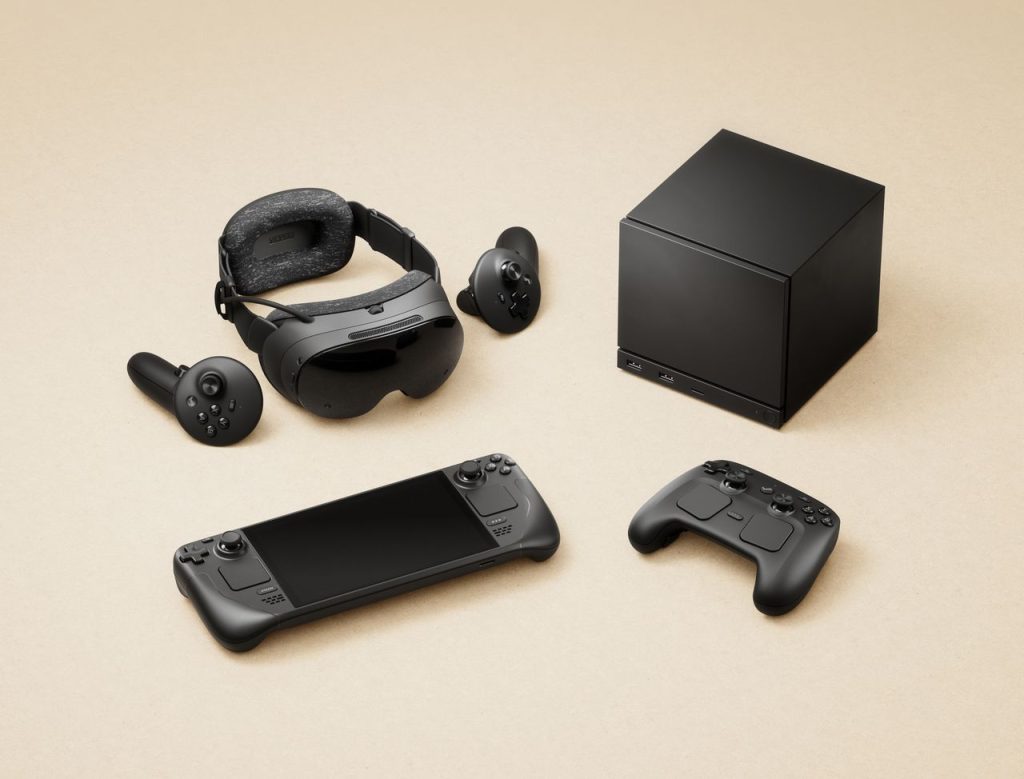Valve’s Return to Gaming Hardware: A Bold New Era for PC Gaming
In a surprise announcement that sent ripples through the gaming community, Bellevue-based Valve Software unveiled three new gaming devices designed to complement its immensely popular Steam platform. Set to launch in early 2026, these devices represent Valve’s renewed commitment to physical hardware after the tremendous success of the Steam Deck. The announcement, which came unexpectedly on a Wednesday, revealed the Steam Machine 2026, Steam Frame, and Steam Controller 2026—each designed to provide gamers with new ways to experience their existing Steam libraries.
Gabe Newell, Valve’s president and co-founder, expressed enthusiasm about expanding the company’s hardware offerings: “We’ve been super happy with the success of Steam Deck, and PC gamers have continued asking for even more ways to play all the great titles in their Steam libraries. Our work over the years on other hardware and even more importantly on SteamOS has enabled Steam Controller, Steam Machine, and Steam Frame to do just that.” This statement underscores Valve’s commitment to creating an ecosystem that extends beyond digital distribution, offering tangible alternatives to traditional gaming setups. The timing of the announcement was particularly dramatic, coming just minutes after rumors and leaks began circulating within PC gaming communities, apparently due to an accidental early release by one of Valve’s partners.
The Steam Machine 2026 represents Valve’s reimagined approach to living room gaming—a compact 6-inch cube designed to blend seamlessly into home entertainment setups. Running on the Linux-based SteamOS, this small but powerful device aims to quietly and efficiently run games from users’ Steam libraries. With its removable front panel for customization and a simple LED indicator, the Steam Machine maintains a minimalist design philosophy while offering substantial functionality. More than just a gaming console, it can transform into a standalone PC when connected to a monitor and keyboard, featuring a KDE Plasma desktop environment that extends its utility beyond gaming alone. This versatility highlights Valve’s vision of bridging the gap between traditional PC gaming and console convenience.
Perhaps the most innovative of the new offerings is the Steam Frame—a standalone virtual reality headset capable of streaming any game from a user’s Steam library with full controller support. Unlike many VR headsets that require connection to a separate PC, the Steam Frame functions as an independent computer, eliminating the need for additional hardware. This self-contained approach to VR gaming could potentially lower the barrier to entry for virtual reality experiences, making them more accessible to the average Steam user. While details about its technical specifications remain limited, the promise of seamless integration with existing Steam libraries suggests Valve is leveraging its ecosystem advantage to create a more unified gaming experience across different hardware formats.
Completing the trio is the Steam Controller 2026, which Valve describes as sharing “DNA” with the Steam Deck. This high-performance, ergonomic controller features magnetic thumbsticks, trackpads, a gyroscope, and grip buttons—innovations that build upon the company’s previous controller designs. Compatible with the new Steam Machine, as well as PCs and laptops, the controller represents Valve’s ongoing efforts to reimagine traditional input methods for PC gaming. While pricing details haven’t been announced for any of the new devices, Valve has indicated that more information will be forthcoming after the start of the new year. This strategic withholding of pricing information gives the company time to gauge public reaction while finalizing production details.
The announcement represents a fascinating full-circle moment for Valve, which previously ventured into similar hardware territory with less successful outcomes. The original Steam Machine and Steam Controller were released in 2015 but discontinued by 2019, failing to capture significant market share. However, the Steam Deck’s warm reception seems to have reinvigorated Valve’s hardware ambitions. From a strategic perspective, these new devices appear to further Newell’s long-standing mission to reduce dependency on Windows for PC gaming by promoting Linux-based alternatives. As the company continues to develop its SteamOS platform, these hardware offerings could be interpreted as another step in Valve’s quiet rebellion against Microsoft’s dominance in PC gaming ecosystems. Whether these new devices will succeed where their predecessors struggled remains to be seen, but the company’s approach—building upon the Steam Deck’s success while addressing previous shortcomings—suggests Valve has learned valuable lessons from its earlier forays into gaming hardware.














